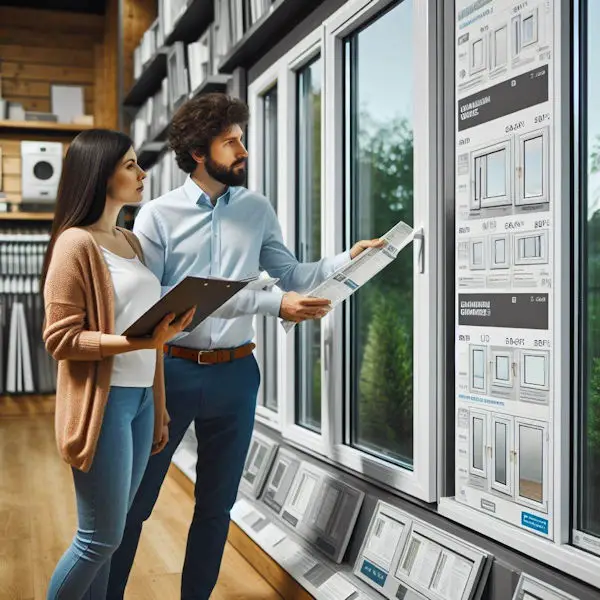Choosing Energy-Efficient Windows That Suit Your Style and Budget

The decision to upgrade your windows is significant—it can enhance not only the aesthetics of your home but also its energy efficiency. As a homeowner, selecting the right windows that balance style and budget can be daunting. This comprehensive guide will walk you through choosing energy-efficient windows that suit your style and budget, covering everything from understanding energy performance ratings to window styles, cost considerations, installation, and maintenance.
Understanding Energy-Efficient Windows
What makes a window more efficient? Manufacturers design energy-efficient windows to prevent heat from transferring through the glass and framing materials. Understanding energy performance ratings such as the U-factor, Solar Heat Gain Coefficient (SHGC), and Air Leakage (AL) is crucial in choosing the right windows.
- The U-Factor: This measures how well a window prevents heat from escaping. The lower the U-factor, the better the window insulates your home.
- SHGC: This rating tells you how much heat the window can block from the sun. A lower SHGC means the window is better at reducing solar heat.
- Air Leakage: This number represents the cubic feet of air passing through a square foot of window area per minute. Look for lower AL ratings.
Energy-efficient windows come in various types, from double-pane with a low-e coating to triple-pane, that offer even better insulation. They all have benefits, so it’s about finding what works best for your climate and home’s needs.
According to Midwest Window Company “25% of a home’s energy loss occurs through its windows. This means that old or poorly installed windows can significantly impact your home’s energy efficiency, leading to higher energy bills and a less comfortable living environment.”
What is Low-E Glass?
Low-E stands for “low emissivity”. Low-E windows contain glass coated with invisible layers of metallic oxide. This coating allows natural light to enter the home while simultaneously deflecting UV rays and infrared light back out into the environment.
Why is this important?
UV rays are invisible rays of light emitted by the sun. UV rays are responsible for fading upholstery, burning skin, and eventually damaging building materials. By deflecting UV rays and infrared light back out into the environment, low-E coatings help keep your home cooler in summer.
During the winter, the reflective coat sends heat (i.e. infrared light) back inside to keep your home’s interior more comfortable.
Choosing Windows That Suit Your Style
While energy efficiency is a priority, you still want your windows to look good and fit the style of your home. There are several window styles to choose from, including:
- Double-Hung: These are traditional windows with two sashes that can slide up and down.
- Casement: Operated by a crank, windows provide an unobstructed view and excellent ventilation.
- Bay or Bow Windows: These types project out from the house and provide a space for sitting or displaying items.
When selecting a window style, consider the architectural style of your home and the function you need. For instance, double-hung windows might be your best choice if you’re aiming for a classic look. Casement windows are ideal if you want a modern feel with excellent airflow.
Considering Your Budget
The cost of energy-efficient windows can vary, but the investment is often worth it in the long run. To balance the efficiency with your budget, consider these tips:
- Cost-Effective Options: Start with the most cost-effective options, such as double-pane windows with Low-E glass.
- Looking for Incentives: Many regions offer incentives or rebates for energy-efficient home improvements, which can significantly reduce out-of-pocket expenses.
Think of window replacement as a long-term investment. While the initial cost might be higher, the savings on your energy bills can quickly add up, offsetting the cost over time.
Installation and Maintenance
Installing your energy-efficient windows is just as important as the windows themselves. Proper installation ensures that the windows perform as intended, so it’s best to rely on professional installers.
- Why Professional Installation Matters: Trained professionals will correctly fit and seal your windows, preventing air leaks and maximizing efficiency.
- Maintenance: Regular maintenance is vital to keeping your energy-efficient windows performing their best. Simple tasks such as cleaning the glass, checking the sealant, and inspecting for damage can go a long way in preserving their efficiency and lifespan.
Remember, a little care can mean a lot of savings and comfort in the future.
Choosing energy-efficient windows can offer immediate and long-term benefits. They can enhance the comfort and aesthetics of your home, lead to significant savings on your energy bills, and contribute to a healthier environment. With this guide, you’re equipped to start your window upgrade process. Consider your local climate, your style, and available incentives, and remember the importance of proper installation and maintenance.
You might also like:
- The True Cost of Neglect: How Deferred Home Maintenance Creates Money Pits
- 7 Ways to Increase the Value of Your Home
- Is a Home Warranty a Good Investment?
- What Happens to Old Solar Panels?
- Is Downsizing Right for You?
Image Created via Bing A.I.
